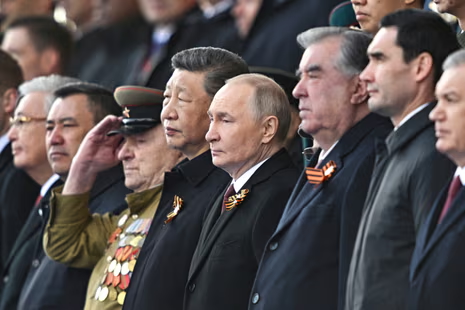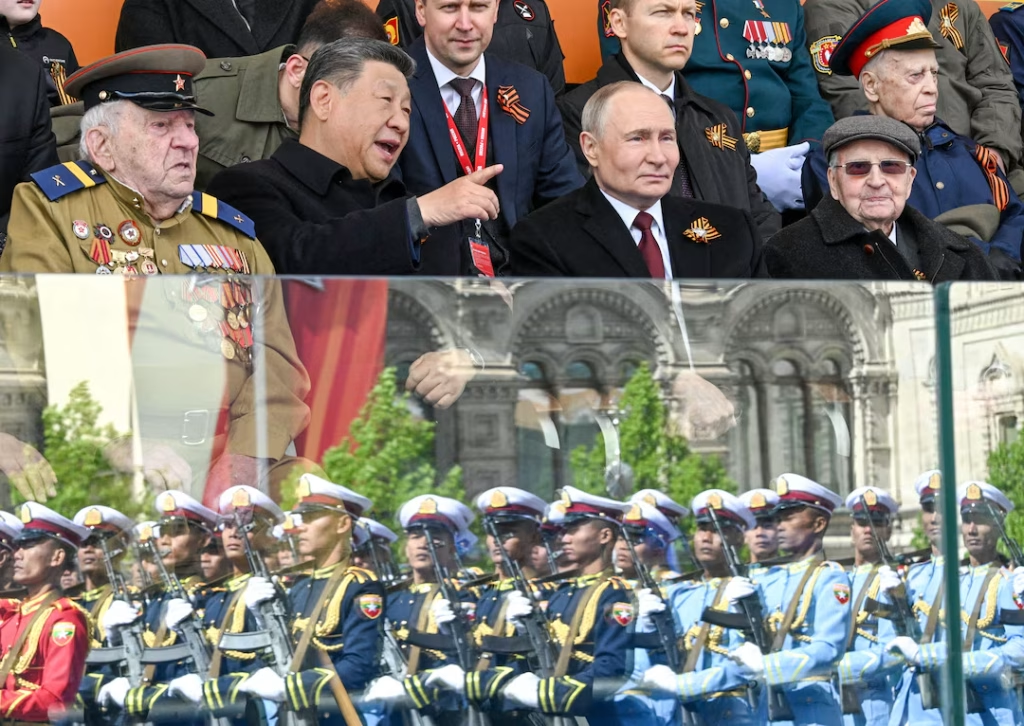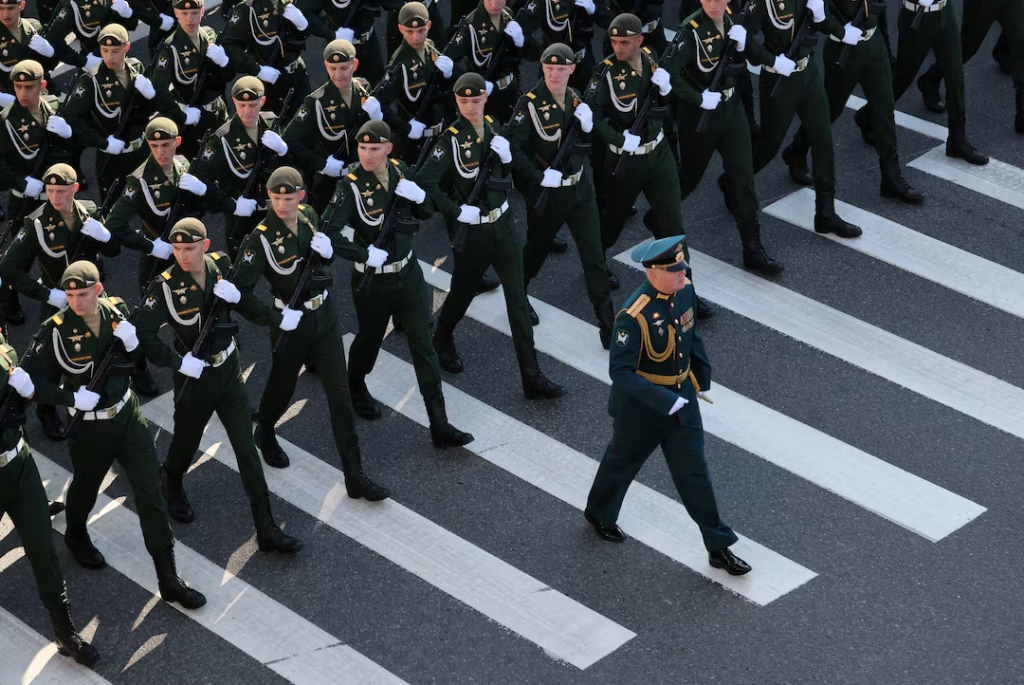May 9th, Russia’s most sacred day of remembrance, was marked with grandeur in Moscow as the country celebrated the 80th anniversary of the Soviet Union’s victory over Nazi Germany in World War II.
Despite the backdrop of a devastating three-year war with Ukraine, the Victory Day military parade on Red Square unfolded without incident, following a 72-hour ceasefire declared by President Vladimir Putin.
Russian President Vladimir Putin, now the longest-serving Kremlin leader since Josef Stalin, stood beside Chinese President Xi Jinping and leaders from several nations across Asia, Africa, Latin America, and the former Soviet Union.

Together, they observed more than 11,500 troops, including 1,500 combat veterans from Ukraine, marching across Red Square in a tightly choreographed military display.
READ ALSO: Gold Climbs as Markets Await US-China Trade Talks
For the first time, drones—now a key battlefield technology—were showcased alongside heavy artillery, tanks, and Yars intercontinental ballistic missiles, which are capable of carrying nuclear warheads.
Chinese troops also took part in the parade, a symbolic move that underscored Beijing’s deepening alignment with Moscow.

Notably, Putin shook hands with North Korean officers, praising their “fighting skill.” According to reports, North Korean troops have supported Russian defenses against Ukrainian forces in the western Kursk region, an area currently seeing heightened tensions.
In a solemn speech, President Putin reaffirmed Russia’s pride in the Soviet Union’s role in defeating Adolf Hitler, while acknowledging the contributions of Western allies, resistance fighters, and the Chinese people during the war. He stated:
“The Soviet Union took upon itself the most ferocious, merciless blows of the enemy. We highly appreciate the contribution of the soldiers of the Allied armies, the members of the resistance, the courageous people of China, and all those who fought for a peaceful future to our common struggle.”

Putin notably avoided direct criticism of the West and made only a passing reference to the ongoing war in Ukraine, which many observers believe cast a long shadow over the celebration.
READ ALSO: Trump Administration Considers Major Tariff Rollback in Weekend China Talks
Although Ukraine had launched several drone attacks on Moscow earlier in the week, Friday’s events proceeded without disruption, as the Russian ceasefire held—at least from Moscow’s perspective. Ukraine, however, claimed the ceasefire was violated, a claim dismissed by Russian officials.

In a pointed statement from Kyiv, Ukrainian President Volodymyr Zelensky criticized the parade, calling it a “parade of cynicism… of bile and lies.” He called on the international community to stand firm against Russia’s aggression: “Evil cannot be appeased. It must be fought,” Zelensky said, as reported by the Kyiv Post.
Russia currently controls about 20% of Ukrainian territory, and the war remains Europe’s most deadly conflict since World War II.
Russia’s Victory Day honors the 27 million Soviet lives lost in World War II, including many from Ukraine. In 1945, it was the Red Army that raised the victory banner over the Reichstag in Berlin after Hitler’s suicide—a moment etched deeply into Russian national identity.

China, too, reflected on its own immense sacrifices during the Second Sino-Japanese War (1937–1945), with historians estimating 35 million Chinese casualties and up to 100 million displaced, alongside the horrors of the Nanjing Massacre.
For Putin, the parade was more than a tribute to history. It was a calculated effort to project strength, foster unity, and demonstrate that Russia is far from isolated, despite ongoing Western sanctions and diplomatic boycotts.
As Russia showcased military might, U.S. President Donald Trump called for a 30-day unconditional ceasefire between Russia and Ukraine. He warned that if not respected, further sanctions would be imposed by the U.S. and its allies.

With the war entering its third year and no end in sight, events like Victory Day serve both as a reminder of past triumphs and as a reflection of current geopolitical divisions.
Victory Day 2025 offered a complex image of modern Russia: a nation steeped in history, navigating a brutal war, and striving to signal resilience to both friends and foes. While Moscow paraded strength, the realities of war and political isolation remain close behind.
Discover more from Scoop Hub
Subscribe to get the latest posts sent to your email.

